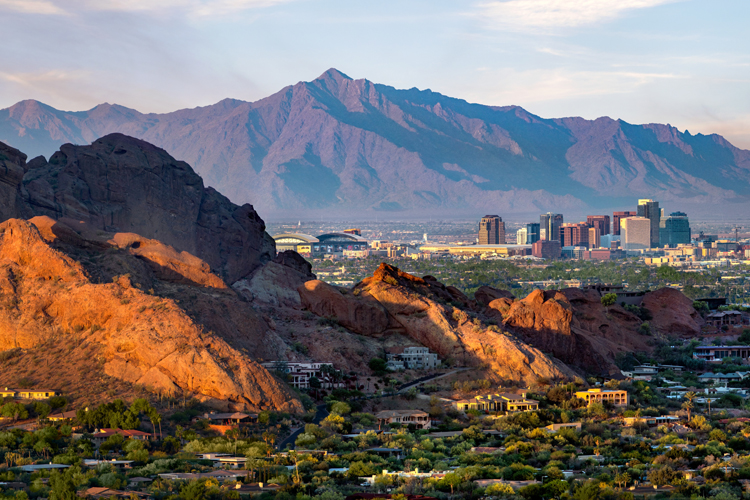When the news gets out that Greater Phoenix is one of the top places in the nation to find a new job opportunity, people start heading to Arizona and Phoenix growth explodes. Late in 2018 and early in 2019, that news started getting out in ranking after ranking. Job opportunities await and a new population follows. The jobs available today are filling roles in the expanding knowledge economy, and growing technology, bioscience and manufacturing sectors. The quality of life in Phoenix is making it easier for companies to recruit from other areas.
READ ALSO: The 15 highest paying jobs in Arizona
As of July 1, 2020, the U.S. Census Bureau estimated that the metro area population grew by an average of 291 people every day. Maricopa County saw its population climb by 86,820, more than any other U.S. county. The entire Phoenix-Mesa-Chandler metro area grew by an estimated 106,008 to 5.1 million people, the fastest pace of the top 10 metro areas.
Census Bureau population estimates differ from the 2020 Decennial Census in that the estimates are calculated projections for the period from July 1, 2019, through June 30, 2020.
Jobs and quality of life are the magnets drawing new populations. More than 80 percent of Arizona’s 2020 population increase moved into Greater Phoenix. Normally, between 67 percent and 70 percent of Arizona’s population lives in Phoenix. With more Phoenix growth, the more companies looking to expand are drawn to the area for its quality workforce.

The metro posted a 2.1 percent population gain, the 16th fastest percentage nationally. Greater Phoenix remains the 10th most populous metro area. The three largest metro areas, New York City, Los Angeles and Chicago, all lost substantial populations in 2020 compared to 2019.
The new population in the Phoenix metro was helped by a steady birthrate, 57,251, up from 56,978 in 2019. Bucking the national trend of a declining birth rate, Greater Phoenix held constant, with an average of 57,000 over the last five years.
In 2020, Phoenix added 6,590 people who moved here from foreign countries. The global in-migration, however, was down from nearly 8,300 in 2019. The 2020 number is less than half the 15,575 who moved here from an international address in 2015. The remaining population increases came from other states or counties within Arizona. Metro-to-metro and state-to-state migration data are released late in the summer.
City population estimates are expected around the end of May. Population estimates are calculated by the Census Bureau using sampling techniques, birth and death rates, and new housing unit starts. The estimates are not the same as the actual population count that makes up the decennial census. Decennial census data won’t be released until late in 2021. The first official 2020 Census data released, the reapportionment census, pegged the state’s population at 7.2 million.




